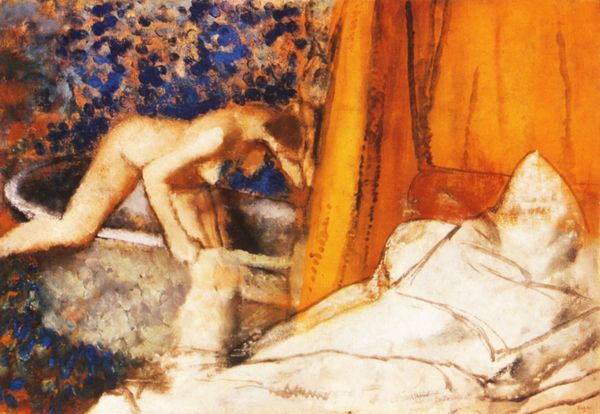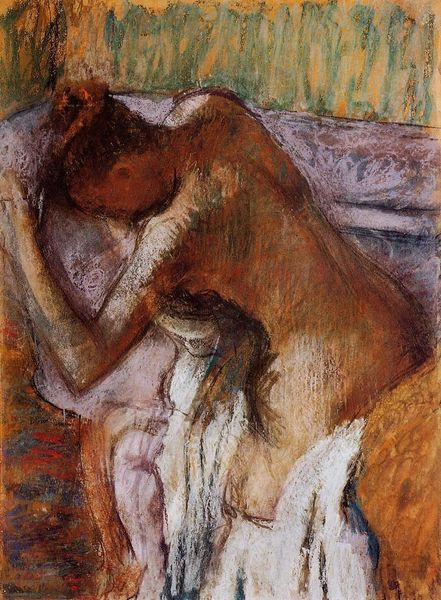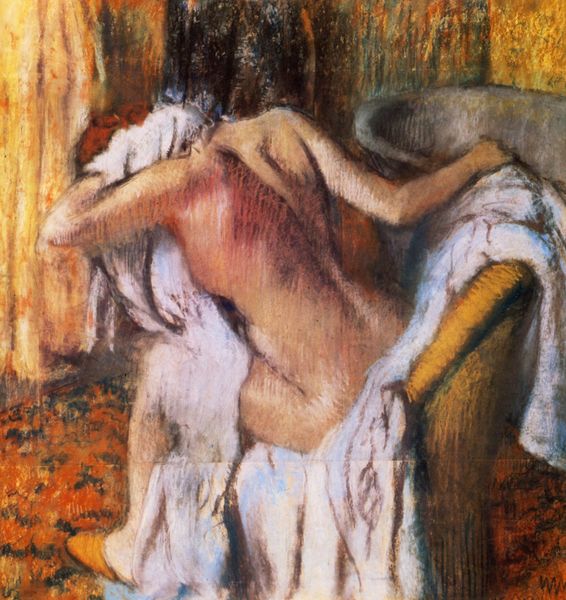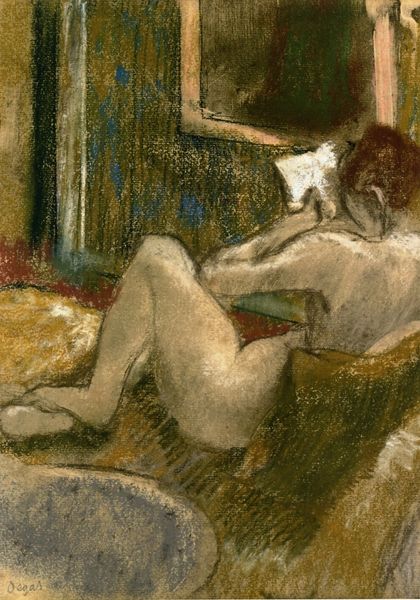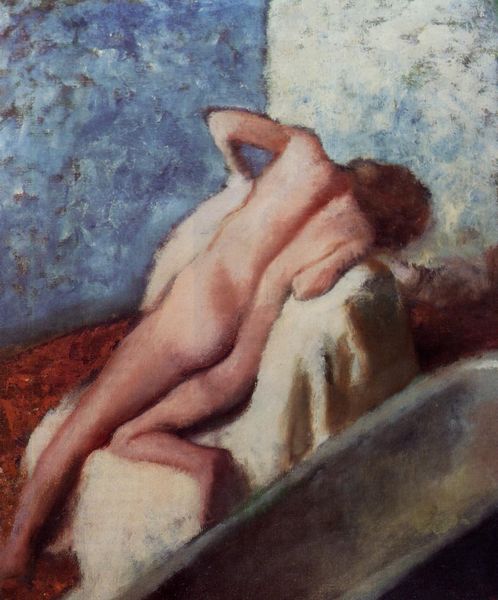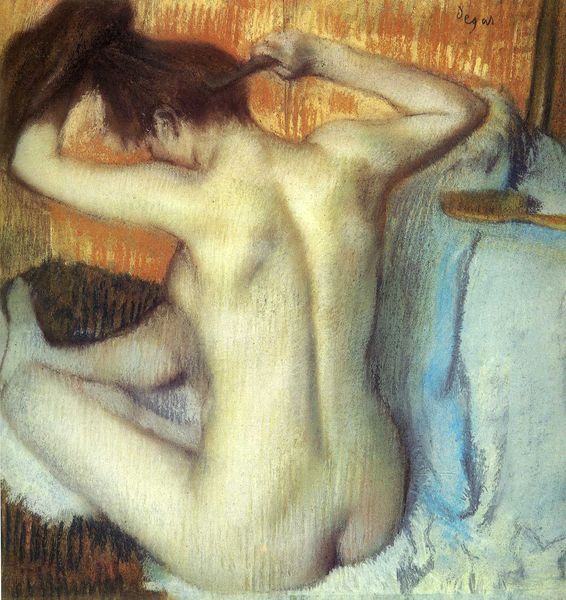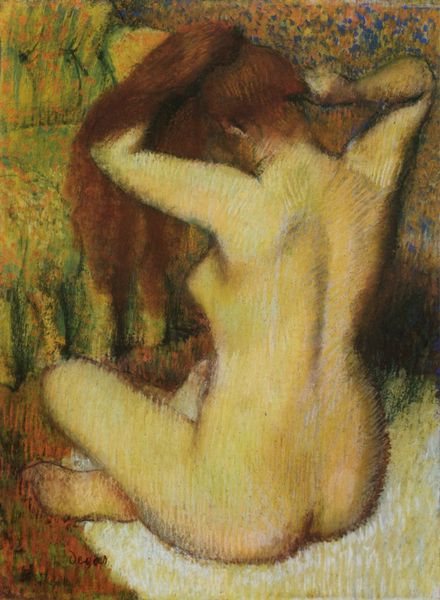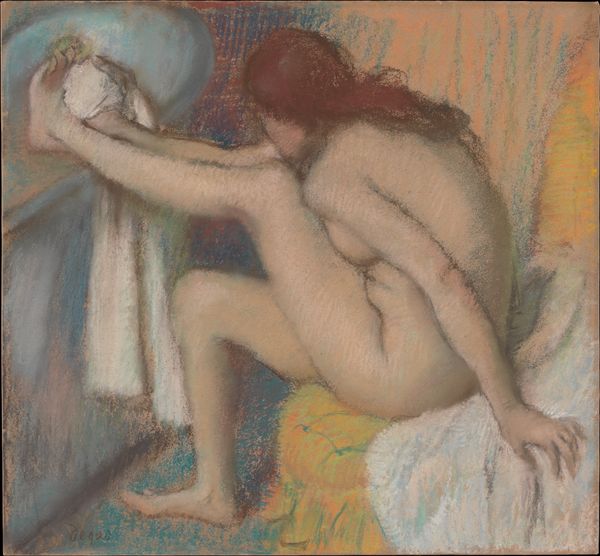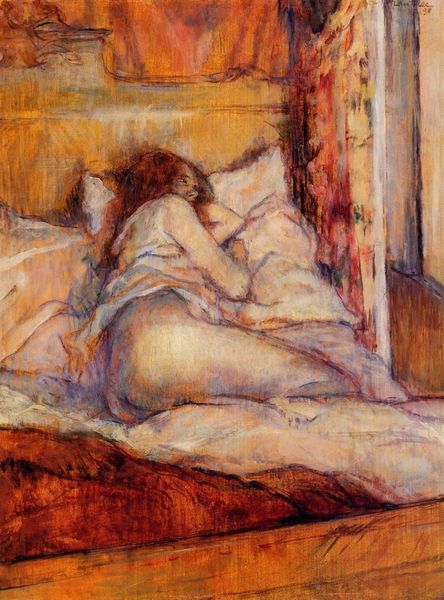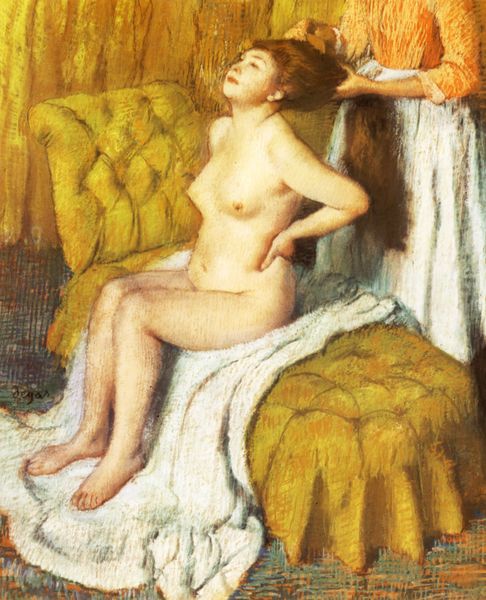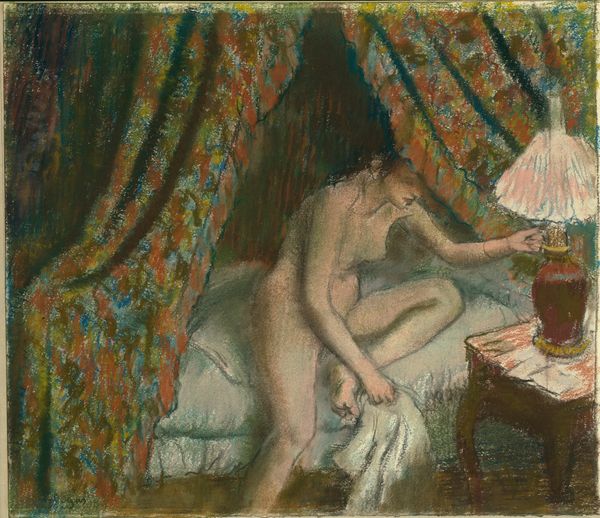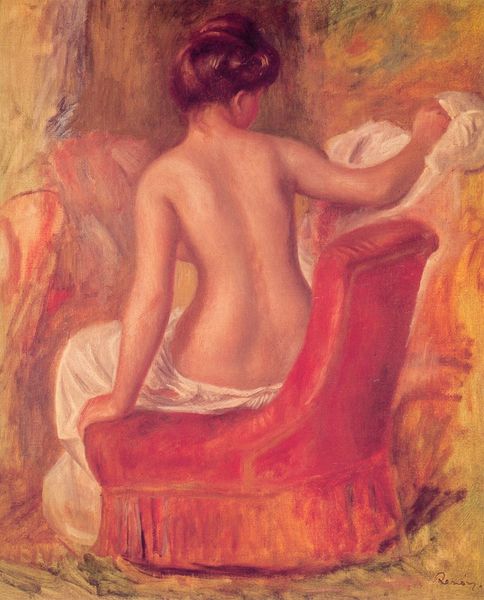
Copyright: Public domain
Curator: The work before us, executed by Edgar Degas around 1895, is titled "After the Bath, Woman Drying Her Nape," rendered in oil paint. Editor: Immediately, the scene evokes a sense of intimate solitude. The subdued palette, the slightly blurred edges—it feels so private, as if we’re intruding upon a very personal moment. The diagonal lines also strike me. Curator: Indeed, the composition and subject matter demand deeper scrutiny when contextualized with societal expectations of women. It's crucial to remember the male gaze and its prevalence during the Impressionist era. These paintings raise valid questions about voyeurism, the objectification of women, and their representation as seen by male artists. How does the pose itself affect you? Editor: Formally, I appreciate how Degas plays with light and shadow to sculpt the figure's form. Notice the subtle variations in color and texture to evoke the dampness of the skin and the softness of the towel, for example, how the background blends with the woman form in brown and orange nuances. It really emphasizes tactility and the artist's skillful capturing of transient moments. It looks like an exercise in abstract form rather than naturalistic rendition of a woman's anatomy. Curator: It's equally critical to acknowledge how women themselves navigated such depictions. Were they simply passive models, or did they exercise any agency within these structures? Moreover, class and social standing intersect, defining which women were likely subjects for paintings like these. What implications arise when the working classes become subject to the gaze of the male artists and a presumably bourgeois audience? Editor: And from the stylistic standpoint, don't you think that we can find precursors of twentieth-century Expressionism here? Look at those bold brushstrokes. He certainly left a rich and fascinating legacy for future generations of artists to admire and dissect. Curator: Precisely. These questions about identity, social critique, and historical context are pivotal. Thank you for speaking about that connection between representation and reality. Editor: It's been enlightening for me as well to revisit the intersection between aesthetic form and the social politics of the late 19th century.
Comments
No comments
Be the first to comment and join the conversation on the ultimate creative platform.
